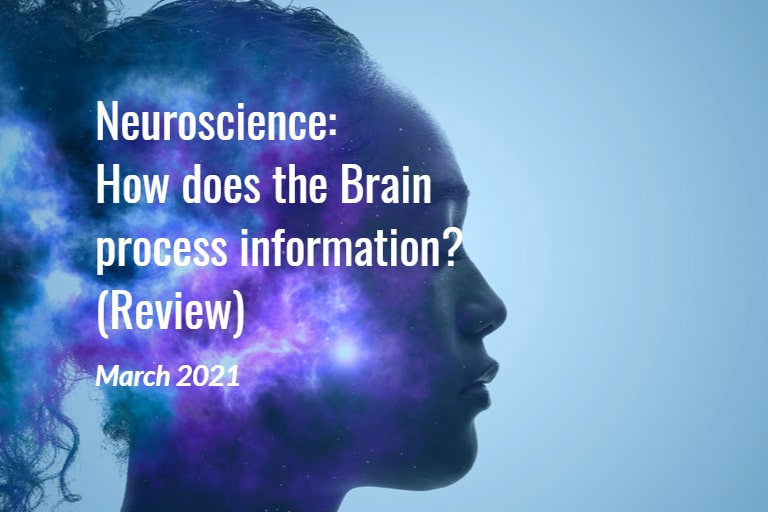By Sean Noah, PhD student at University of California (Davis)
Recently I asked one of my faculty advisors if he would ever write a popular science book. He’s a bestselling author in his own right, having written a textbook that many consider to be an essential operating manual for human cognitive neuroscience. But as for penning a work of popular science, he denied having any interest. “I don’t want to have to write a book of lies,” he said resolutely.
Hot take, but I understand what he means. Crafting a book that can appeal to the broadest audience requires omitting technical details that take years of study to really grasp. Consequently, with the trickiest details smoothed down, popular science books too often end up skating over the controversies and ambiguities that mire the forefront of a scientific field.
These books claim to offer transmissions from the cutting edge, when in reality the “cutting edge” is less like a well-defined blade and more like a fuzzy creeping mold. At the edge, the supposed line between true and false is really a thicket of conjecture and debate, evidence and counterargument; proxy measures, simplifications, assumptions; confidence intervals, replicability concerns, and controls for long-run error. Any academic researcher will tell you this. And often they will tell you this with a grim countenance. But the task of the popular science author is to portray this thicket from a distance, so that it appears as a line – a sharp, bright line with a cutting edge. Well, the line is the lie; that’s what I understood my emphatically uninterested faculty advisor to mean.
And yet: I am not reluctant to engage with popular science. Reading books about the mysteries of outer space or about the frenetic machinations of our cells and tissues hooked me on science from a young age. And even now, after several years of graduate study in cognitive neuroscience, I still regularly turn to lighthearted books about the brain and the mind when I want to see my field with a wider angle and a softer focus.
“Professor Humphries […] has woven together strands of experimental results and theoretical insights to compose a book that is engrossing, excites the imagination […] and points the way to future discovery.”
The Spike, by Mark Humphries, is a book that I will return to often for this purpose. Professor Humphries, Chair in Computational Neuroscience at the University of Nottingham, has woven together strands of experimental results and theoretical insights to compose a book that is engrossing, excites the imagination, beautifully encapsulates contemporary neuroscience in a light and breezy package, and points the way to future discovery.
On its surface, The Spike is a story about input and output: What happens when a mote of light strikes the eye, initiating a signal that wends its way through the brain, eventually to prompt a muscle into action. As the story goes, that bit of light happens to issue forth from a cookie sitting on a desk in an office, and the effect eventually produced is a surreptitious movement to nab the tempting treat. Against the backdrop of this prosaic little scene is cast the seething, hypercomplex drama playing out inside the skull. This juxtaposition of the drab and the drastic is hilarious, and the playful tone established by this premise is buoyed throughout the text by conversational language and colorful prose. For example: Action potentials are the titular “spikes,” synapses are “gaps,” and at one point the structure of cortex is described as “a delicately layered cake, six layers in all, five layers crammed with juicy neurons, the first, top layer bereft of them.” And, in keeping the style light and conversational, the book is free of any footnotes, a mercy that I earnestly appreciated while reading.
In this breezy casual manner, The Spike tracks the tortuous path from retina to visual cortex, through object recognition and localization processes, to prefrontal cortex, through basal gangliaA collection of structures thought to be especially import… and motor cortex, and into the spinal cord. But just as the mundane occurrence of an office worker reaching for a cookie belies the immensity of activity unfolding in the brain, the story of a neural impulse originating in the retina and ending up at a neuromuscular junction is even itself just the surface of a much more significant story: In its essence, The Spike is an overview of modern neuroscience grappling with the profound question of how exactly the structure and activity of the brain enables it to process information. If the brain is a biological computer, how does the computer work? How do action potentials, the currency of neurons, carry information about the world outside the skull, transmute it, and utilize it? By presenting leading theories from computational neuroscience in the narrative framework of the spike’s journey, Professor Humphries tackles this daunting task brilliantly.
“The Spike is a popular science book in the sense that it boils down a vast field of scientific inquiry into an entertaining tale”
The Spike is a popular science book in the sense that it boils down a vast field of scientific inquiry into an entertaining tale that can be digested by a general audience. A reader would be well-served to have some educational background in biology and neuroscience, so that talk of membranes, ions, voltage, and the like doesn’t bog down the narrative as the bigger picture is sketched out, but the story is accessible to a broad audience of science enthusiasts. Even for its popular science credentials, the book still has plenty to offer to a seasoned neuroscience student or researcher, especially anyone who is eager to poke their head up from their work’s narrow specialization and check in with the status of contemporary neuroscience at large.
My longstanding appreciation for the popular science genre has never faltered over the years, but it has evolved. More and more, as I move along the scholastic path, I’m learning what makes for a good popular science book. The content of popular science books should balance engaging stories with the unflattering uncertainties that are the true engine of theoretical progress, and underpin bold claims with enough technical detail to make the logic sound. But first and foremost, the key objective of a popular science book is to not be boring. The Spike accomplishes all of these objectives expertly, and is one of my favorite books of popular neuroscience that I’ve ever read.
Sean is a PhD student at UC Davis, studying the neural mechanisms of attention. Previously, he studied cognitive science and neurobiology at UC Berkeley, and then worked for Think Now, Inc., studying attention with EEG. He is deeply interested in artificial intelligence, the nature of information in the brain, and the relationship between consciousness and attention.
Note: The views expressed in this article are the author’s, and not the position of Intellectual Dose, or iDose (its online publication). This article is republished from Knowing Neurons under a Creative Commons license.



